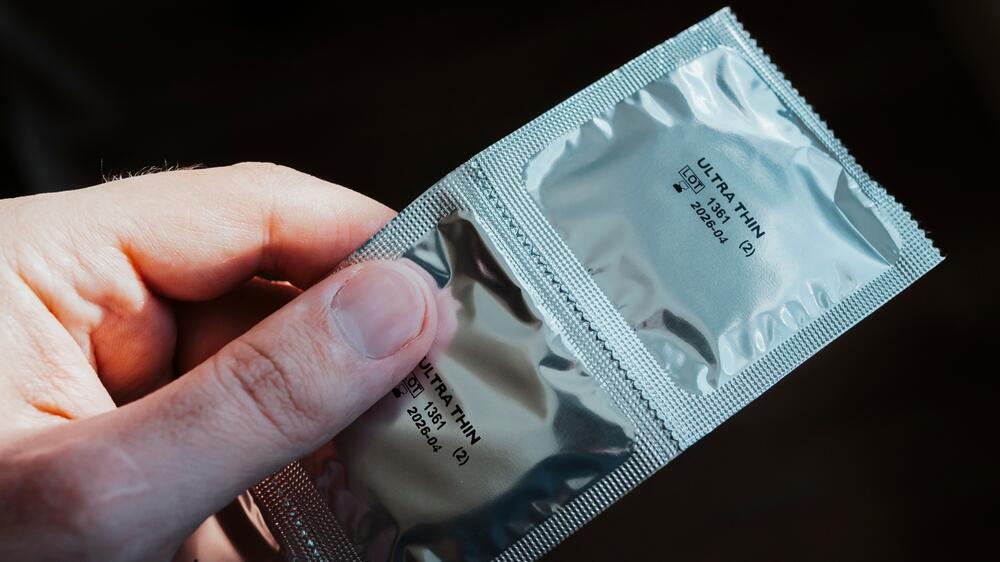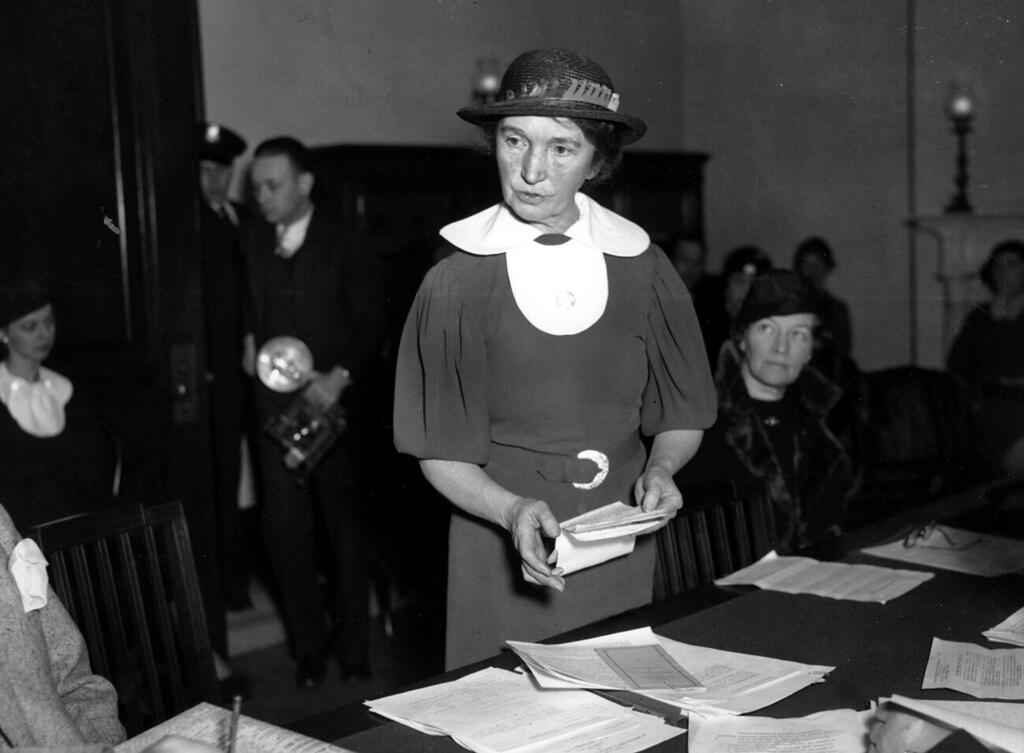For thousands of years, man has sought to avoid the consequences of sex – the birth of a baby. In their efforts to elude pregnancy, people have come up with weird and wonderful inventions – some more successful than others.
Stories that may interest you:
One thing’s for sure though: Contraception hasn’t been with us since the dawn of time. In the developed world, we take it for granted, but for thousands of years, it weighed heavy on millions of people all over the world. Only a few generations ago, was the problem (partially) solved.
In antiquity, Biblical, Greek and Egyptian civilizations all tried to find the answer to the million-dollar question: How do you have sex and don’t end up with a baby?
Contraceptive methods can be divided into two distinct categories:
The first is physical contraception – creating some kind of barrier that, while allowing for sex, prevents the sperm from meeting the egg. The second is hormonal contraception, pioneered less than a century ago utilizing various technological and scientific breakthroughs. Throughout history, the world focused on the first kind.
What's the Bible's take on contraceptives?
The Bible recounts a case of the withdrawal method (coitus interruptus) for avoiding pregnancy. Genesis 38 tells how Judah’s second son, Onan, is told to marry Tamar, the widow of his late elder brother, in what was known as a Levirate marriage, conducted when a married man dies childless. Onan was to father a child to continue his brother’s legacy. Judah, however, didn’t want a child from Tamar and so used the withdrawal method.
The Talmud explicitly addresses the withdrawal method. Rabbi Meir, one of the greatest Tanna’im, says that for two years following the birth of a child, the woman’s husband should “spill seed” i.e., withdraw. This dispensation is designed to prevent further pregnancy while nursing, endangering the baby already born. Ketubot Tractate, suggests that a woman should “turn over at the conclusion of the sexual act so that she will not become pregnant.” Don’t try it at home.
Rabbinical sources further suggest the use of a “moch” (cotton wool) to be inserted before intercourse.
There was also the “cup of sterility,” taken orally. Genesis 4 tells the story of Adah and Zillah, two wives of a man named Lemech. Midrashim elaborate that Lemech would have sex with Adah for procreation and with Zillah solely for pleasure. Zillah was given the cup of sterility, containing resin, minerals and various weeds, and guess what? It didn’t work. She gave birth to two children (just like Adah).
Hey, at least they tried
It wasn’t just the Jewish world endorsing strange potions to prevent pregnancy: Ancient Egyptian papyri and Hellenistic doctors provide lengthy lists of natural spermicides: In Pharaonic Egypt, they recommended the use of ointments made of crocodile dung, honey or acacia resin – a sticky substance that omits lactic acid. In Ancient Rome, castor oil and honey ointments were very popular. Our ancestors further tried out potions that included wine, vinegar, lead salts, oil and camel spit.
The most famous contraceptive in antiquity was the resin derived from silphium – a plant that grows in North Africa.
Pomegranate was popular too. In Greek mythology, Persephone, the goddess of Spring, is abducted into the underworld and refuses all food with the exception of a few pomegranate seeds. This diet caused her to lose her fertility during the winter months. Athenian women celebrated Persephone’s return in all-female festive revelry.
Surprisingly, some of these potions did actually prevent pregnancy. Lactic acid, for example, is an active ingredient used in modern spermicides. Certain plants contain high concentrations of phytoestrogen (phyto = plant, estrogen = the hormone), the molecules present in plants with structures similar to that of the hormone estradiol found in humans and animals. These plants are still used today to treat gynecological disorders in folk medicine.
Despite the occasional success, for the most part, these potions were definitively ineffective. They were nonetheless drunk for years in desperate attempts to combat the course of nature.
Sixteenth-century Canadian women would melt ground beaver testicles, combine the shavings with alcohol and then drank it as a contraceptive. The ancient Chinese, would drink mercury or water containing lead. In Europe, right through to the 1950s, women washed their vaginas in Coca-Cola believing that carbon dioxide and sugar prevented pregnancy. Spoiler alert: they don't.
There are two contraception methods whose effectiveness is not questioned:
Firstly, abstention, which has received the blessing of religious leaders and secondly, castration. In the ancient world, castration was considered a legitimate form of preventing reproduction. The victors in wars weren’t content with just conquering land, but would also castrate their enemies to stop them from multiplying. Castration was also used later to avert population explosion: On the Chatham Islands, east of New Zealand, some of the young men were castrated as the island was too small to support the growing population.
Most people, however, wanted neither to stop having sex nor to be castrated. The various spermicides and magic potions created by both charlatans and well-meaning individuals generally didn’t fare very well.
What’s left? Ladies and Gentlemen: The Condom. No, not the little latex thing that comes in a shiny wrapper, but rather the earlier, primitive, particularly repulsive version.
The history of the condom
Men have been covering their sexual organ during sex to avoid sperm entering the woman’s body since extremely ancient times. Historical findings suggest the use of condoms (some better, some worse…) since the second millennium BCE. A wall painting in France dating to the Bronze Age portrays a man donning a condom. Ancient condoms were generally made of animal tissue including tortoiseshell, leather, bladders and intestines.
Greek mythology provides the earliest historical reference to a condom. It was a bespoke condom made especially for Minos, King of Crete, who legend has it, infected his partner with a sexually transmitted disease (STD).
At a time when medicine was not advanced, and the cure for STDs was a vain combination of herbs and prayers, his poor partner soon died. Following her death, Minos’s name preceded him, and not in a good way: He was known as the king with sperm made of “scorpions and serpents”. Fortunately, Minos wasn’t a douchebag about it and took full responsibility. Not wanting to kill any more sexual partners (or his legal wife) and also wanting to carry on producing children, he sought counsel from his advisors.
The condom crafted especially for him was made of a drained and cleaned sheep’s intestine.
Historians differ on the method of use of this condom. Some scholars believe that the condom was worn on Minos's penis, others stipulating that it was inserted into a partner's vagina. Either way, Minos didn't kill any more women after that, but he did manage to impregnate his wife eight times. It‘s unclear how Minos's condom prevented STDs but not pregnancy.
For thousands of years, a variety of types of condoms served a broad range of cultures and constituted antiquity’s most popular form of contraception. They were typically made using animal intestines, flexible, liquid-resistant shells and sometimes plants or flowers. Tribes in what is now Papua New Guinea had a novel organic solution: Before intercourse, they would insert into the vagina a long plant-shaped goblet. The vagina muscles would help the “goblet” set firmly inside the woman. Following intercourse, the plant would be removed together with the seminal fluid. Further organic versions of the condoms used fabrics such as linen or cotton.
As STDs made their way from Europe to the Far East, contraception improved. The Chinese created a kind of silk paper that was lubricated before being inserted into the vagina. The Japanese used soft animal shells.
As medical research advanced, so did contraception. The 16th century saw syphilis spread across Europe. Italian physician, Gabriele Falloppio, writes about the widespread use of condoms at the time. He describes condoms, used primarily in brothels, that were made of linen immersed in a special purpose-made chemical solution and dried out before use. Syphilis, which was not treatable at the time, invariably rendered prostitutes infertile, so the concern regarding unwanted pregnancy was quite low - the prime motive for the use of condoms was the fear of contracting STDs.
The pill - women taking control
By the mid-19th century, as methods developed to make rubber durable, strong and elastic, commercial companies manufacturing rubber products started cropping up. Initially, each patient had a doctor oversee the creation of personalized, made-to-measure condoms. They were too short and tended to fall off during sex. A correctly sized one-size-fits-all condom soon appeared on the market and “condoms” became colloquially known as “rubbers.”
The invention of the latex condom was a real breakthrough. Condoms now became cheap, effective and available to all. For decades, the condom was far and away the most popular form of contraception, only falling from grace in the 1970s with the invention of the contraceptive pill (”the pill”).
The women’s rights movements gained traction through the 19th and early 20th centuries. Women’s voices were now being heard in Britain and the United States - including on matters of sex and reproduction. It was a long, slow process that began during the Renaissance period. Years of dramatic scientific development led to nationalist and individualistic ideas that in turn led to the demise of the power of the Catholic church that prohibited abortion, contraception and premarital sex.
The golden age of science and the Enlightenment proved fertile ground for developing a contraceptive pill. If you take a few steps forward, there’ll always be someone trying to keep the status quo. In the United States, Congress enacted the Comstock Act in 1873. This federal law prohibited the distribution of erotic materials, sex toys, contraception, information about contraception, aiding or abetting abortion – basically anything that might allow for the growth of sexual individuality.
“Planned Parenthood” (which still exists) was founded in 1916, in the United States. It called for the abolition of all the laws forbidding the distribution of contraception. The organization set itself the task of providing the public information regarding prudent family planning.
Three valiant American women stood behind the project: Margaret Sanger, who was a social activist for sexual liberation, her sister Ethel Byrne and their friend, Fania Mindell. Although strictly illegal, the three opened a contraception clinic in Brooklyn, New York offering women contraception and information regarding pregnancy prevention. Predictably, not everyone was enthralled with the clinic. They were reported to the authorities, arrested and tried. Their headline-catching trial ended in conviction.
At the appeal hearing, the judge refused to overturn the ruling, but worked to change the law addressing the use and distribution of contraceptives. Consequently, each and every woman in the U.S. was entitled to contraception with a prescription from their family doctor. This dispensation, coupled with public demand, meant that science could now do the rest.
Although by the mid-20th century, the conditions for developing hormonal contraceptives were in place, the drug companies, governments and universities expressed no interest. Jewish American biologist, Gregory Pincus, brought about the much-awaited breakthrough. Pincus researched hormones and specialized in reproduction. In a controversial piece of research, he managed to produce the first rabbit embryo in laboratory conditions (in vitro – in glass), thus conducting the first fertilization outside the body.
This earned him both praise and criticism. After Harvard fired him, he continued his research independently. He acknowledged that women of childbearing age do not ovulate during pregnancy. He realized that this is due to the high level of estrogen in a woman’s body when she’s pregnant and that if he could create conditions whereby the estrogen levels in the woman’s body remain high, she wouldn’t ovulate. Thus came about the idea of creating a hormonal pill to prevent pregnancy.
Pincus and Margaret Sanger met for dinner in Manhattan in early 1951. She described to him the lives of poor women forced to go through unwanted pregnancies. This conversation left a deep impression on Pincus. His research now became his life’s purpose. He promised to do all he could to create some kind of contraception against these unwanted pregnancies.
Sanger helped Pincus with a modest research grant from Planned Parenthood. Pincus set out to work in April of that year. A year later, Sanger told her friend, wealthy widow, suffragette and philanthropist Katharine McCormick about Pincus’s work. The two met up with Pincus whereupon, McCormick pulled out her purse, opened up her heart, and gave a donation worth 50 times that of the research grant Planned Parenthood was able to give.
To prove that the pill was safe, with medical supervision, trials were conducted on women in Puerto Rico, Haiti, Mexico and Los Angeles. In 1960, the FDA approved the pill and its use. The campaign for its accessibility was arduous. It was forbidden for married women in all American states until 1965, and in the rest of the world until 1972. On New Year’s Day of 1961, Australia became the first country outside the United States to distribute the pill. By June of that year, it was available in Germany, then in France in 1967.
In Japan, political lobbying by the medical association managed to prevent the pill’s approval for almost 40 years. Japanese doctors claimed it wasn’t safe in the long-term as it would lead to a decrease in the use of condoms, thus spreading STDs.
In 1999, only six months following the application for authorization, Japan approved the use of Viagra. Almost 50 years following the advent of the pill, Japanese authorities were still claiming that “more research is needed.” Japanese women had had enough. The discrepancy between the medical authorities’ sensitivities to the needs of men and those of women had become too vast to ignore. Japanese women’s public outcry was deafening, ultimately leading to the country’s approval of the pill. To date, the use of the pill in Japan is relatively low compared to other Western countries while the use of condoms has remained high.
Over 100 million women worldwide take the pill, which is classified by the World Health Organization (WHO) as essential medication. There is still a degree of opposition in some traditional cultures and societies, and availability is extremely limited in some developing countries.
The pill ranks among the most important inventions of the 20th century, affecting women’s status worldwide: Before the invention of the pill, women invariably found themselves unwillingly marrying men who had gotten them pregnant or, conversely, raising children alone – children they couldn’t abort or whose conception they couldn’t prevent. As a rule, these mothers lived in poverty and, if working at all, would be employed in marginal, low-paying jobs.
What's next? Take responsibility, boys
The marriage age has also gradually risen. Until the industrial revolution, men would usually marry upon reaching sexual maturity at 13 or 14. With the development of capitalism, came the need for more extensive professional training, and the legal marriage age rose to 16 and later 18. With the pill, marriage and children don’t necessarily have to come together. You can marry later. No pressure. Then comes the “but.”
But the pill is a drug. Like all drugs, it comes with a long list of side effects. In recent decades, research has outlined the long-term dangers of the pill: It can lead to irregular bleeding, weight gain, mood swings, headaches and yeast infections. It also increases the chances of breast cancer and excessive blood clotting (hypercoagulation) that can cause life-threatening illnesses. Despite its effectiveness, some women are still giving the pill a miss.
Over 60 years after women received control over their own reproductive process and (in the case of a regular partner) freed men from the use of condoms, women are now rethinking. In an egalitarian relationship, why should the woman bear sole responsibility for preventing pregnancy? How haven’t they yet invented a male pill? Even with all the research and clinical trials over the last decade, it doesn’t look like any man will be popping off the local pharmacy for a pack of contraceptive pills for himself anytime soon. Someone needs to take up the gauntlet.









